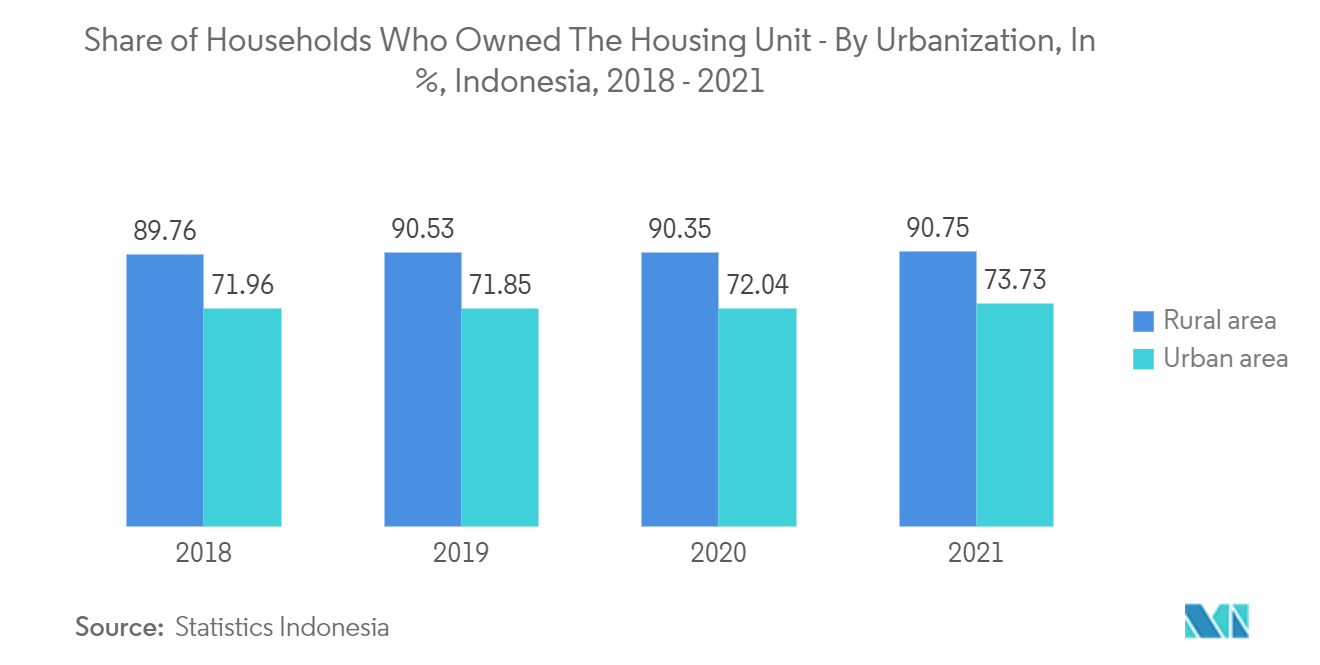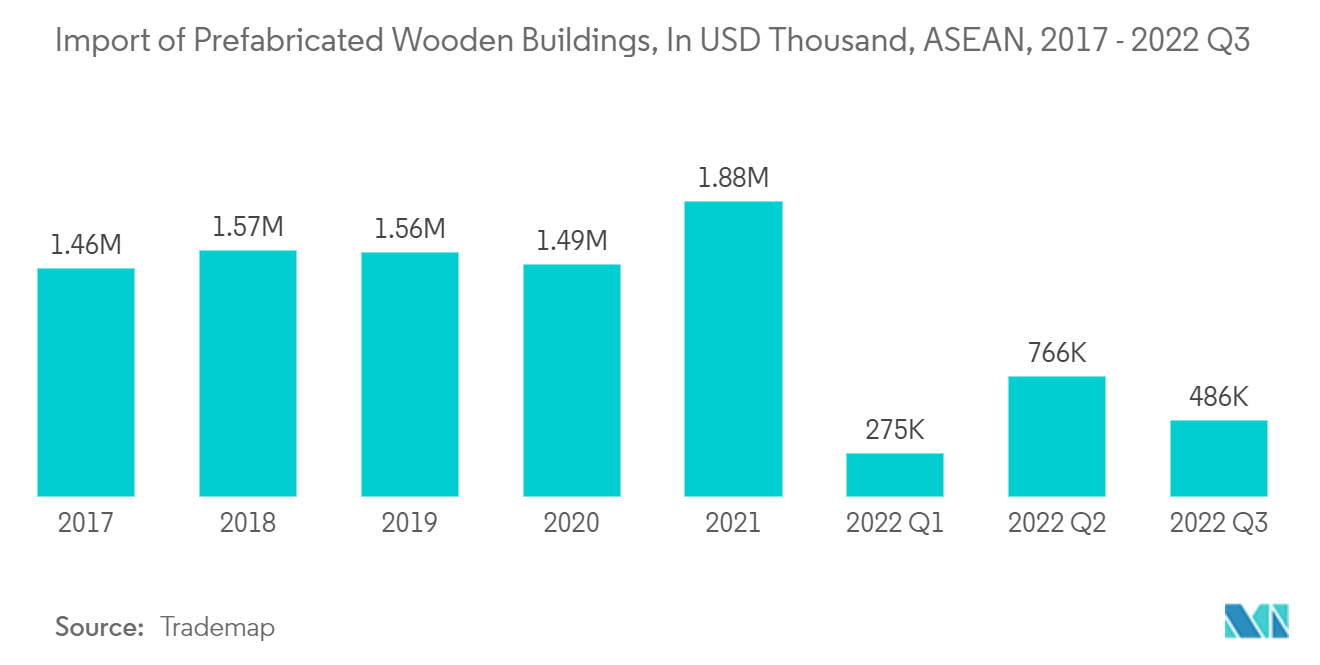Market Trends of ASEAN Prefab Wood Buildings Industry
This section covers the major market trends shaping the ASEAN Prefab Wood Buildings Market according to our research experts:
Demand of Prefab Buildings in Indonesia Driving the Market
With the increasing cost of land and contractors in the country, many Indonesians are seeking out more affordable ways to design and build a home to their liking. For some, these considerations lead to prefab houses which are homes made from prefabricated components. The need for housing is anticipated to rise by 72% until 2045 as a result of Indonesia's population expansion. The price of real estate is increasing at the same time, making it harder to find affordable housing. As a result, a housing scarcity in the country's near future is a possibility. Additionally, Indonesia's market is now dominated by concrete building, which contributes 8% of the world's CO2 emissions. This highlights the need for an innovation in this industry that is both economically and environmentally sustainable.
The construction of prefab houses is indeed much faster than the construction of traditional houses. The Indonesian government gives incentives like a 10% reduction in tax payments to real estate developers who can hand over a new house to a customer within 6 months. Since the beginning of 2021, the use of wood has experienced a very high increase. Wood is now a building construction material with the highest utilization growth compared to other materials such as steel and concrete. Automation of prefabrication and processing results in increased productivity and increased competitiveness of wood materials. It is now even possible to use robotic collaboration to carry out the construction of wood products.
The government through the Ministry of Public Works and Public Housing (PUPR) is targeting the construction of 5 million housing units within five years.

Increasing Adoption of Sustainability In Construction Sector
The carbon reduction in prefabricated buildings has attracted increasing attention due to its importance to low carbon and energy savings in the construction industry. Buildings have a huge potential to reduce energy consumption and greenhouse gas emissions and, in turn, make a real difference in the environment. Southeast Asia's urban population is expected to grow by another 100 million people by 2030, so the region will see greater urbanization and buildings within the next decade.
Vietnam is more exposed to climate risk than nearly any other country in the world. Most recently, in its National Strategy on Climate Change, Vietnam announced a 43.5 percent emissions-reduction target by 2030, sector-specific emissions targets for 2030 and 2050. The Ministry of Construction considers green project development a key measure to achieving the goal of cutting CO2 emissions from building materials production, buildings, and industrial processes by over 74 million tonnes. According to the Ministry of Construction (MoC), Vietnam's housing demand will increase by 70 million square meters each year, equivalent to 17,500 buildings of 30 floors by 2030.
The construction sector has been proven to be one of the contributors to the increase in CO2 and other GHG emissions in Malaysia. Materials such as aluminum, steel, concrete, and bricks are considered to be materials that contribute to high embodied energy. In Singapore, a high-urbanised tropical citystate, buildings are responsible for more than 20 per cent of carbon emissions. Earlier this year, new ambitious sustainability targets were set for the built environment under the Singapore Green Building Masterplan.


